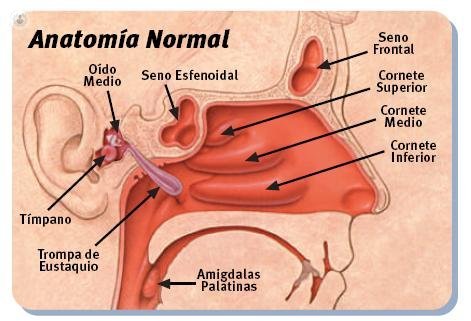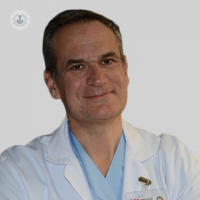Why do not breathe well through the nose?
Written by:To know the different causes of your poor nasal breathing you should go to the otolaryngologist. ENT is the only doctor who has the appropriate technical means, the nasal fiberscope to visualize the inside of your nose and make an accurate diagnosis. Without seeing the inside of the nose diagnosis may not be correct.

The causes of nasal breathing is not possible , sufficient or satisfactory are many, but among them include:
1. deviated nasal septum. The septum separates the two nostrils in the midline of the nose. Sometimes spontaneously during the growth, development or face due to trauma same deviation it occurs to a nostril or bending in an "S" causing unilateral or bilateral nasal respiratory difficulty.
Treatment: The only effective treatment is to overcome these deviations surgery. This surgery is done from inside the nostril, leaving no external marks or cuts.
2. Chronic Rhinitis is an inflammation of the nasal mucosa and the enlargement of the turbinates.
The turbinates are a structure found in the nostrils. The center thereof is composed of bone. Its function is to condition the air we breathe and it arrives in optimal conditions to the lungs: filters, warms and humidifies the air we breathe.
This increased size of the turbinates (hypertrophy), especially the lower, causes nasal respiratory distress. Turbinate increases in volume and is less free space to breathe. In addition to bad breath through the nose there is often clear mucus (fluid rhinorrhea), decreased sense of smell, nasal itching and sneezing.
Many of these chronic rhinitis are allergic cause. Allergies are more frequent in spring due to grasses, but can occur at any time of year due to dust mites, arizonicas, etc.
Treatment: The treatment of chronic rhinitis is done with drugs: antihistamines and nasal steroid sprays. With the use of this medication control most rhinitis is achieved.
However, there are people who do not improve despite treatment perform properly. For these cases we have minimally invasive surgery performed with sedation, in which it is to reduce the size of the turbinates, is the Radiofrequency surgery called turbinates.
In this surgery, a high frequency energy is applied by introducing an electrode per nostril. It is performed on an outpatient basis, the patient a few hours of surgery can go home, have little risk and few complications, but instead, the result is satisfactory.
3. Chronic rhinosinusitis and nasal polyposis: are inflammations and infections of the mucosa and sinuses plus nasal causing respiratory distress, abundant mucus and pain or facial pain.
Treatment: Treatment is with medication initially reserving surgery for cases with symptoms of poor control and repetitive surgical cases are addressed by nasal endoscopic surgery through the nostrils without external scars..



